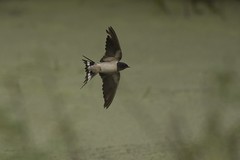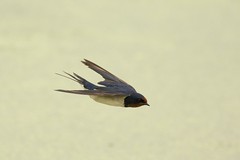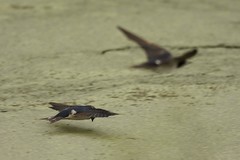 My first encounter with the Great Horned Owl, GHO or Bubo bubo was not so long ago at Nanmangalam.
My first encounter with the Great Horned Owl, GHO or Bubo bubo was not so long ago at Nanmangalam.
Mr Ramanan, a veteran of many a GHO encounter, was there again recently, and captured this magnificent picture above. These large birds are quite something else. They breed post-monsoon, so maybe another set of chicks we shall soon see? We had seen some chicks during the bird race, earlier this year. Quite grown they were by then. Read about it here.
Recounting an interesting story, Mr Ramanan narrated how, in the early days there were no roads around Nanmangalam, and the Velachery roads were all full of potholes, and in some places a mud track as well. The Nanmangalam scrub was not that thick either, and the planted eucalytus was also still young.
Not familiar with the ways of the Bubo bubo, learning was by experience, which included getting his ear clipped by this large owl! Using the help of a shepherd boy, Mr Ramanan would scramble up to the nest of the GHO, to check and record the growth of the chicks.
While inspecting the nest for recording the growth of the chick, the adult GHO clipped my ear! From that day onwards I used to wear a helmet whenever I approached the nest! May be my regular presence and the fact that I was not a threat to the chick, the adult bird became some what friendly. When ever I was alone or with MNS members or with lot of birds enthusiasts from abroad, the bird immediately with loud calls of "bubo bubo" approached us."
The adult that clipped his ear!
Through his numerous visits, he has seen the "
broken wing" and the threat displays of the GHO. Hopefully, one day I will see this fascinating behaviour.
What the owl does when it feels that its nest is under threat is that it lands on the ground some distance from the threat, acts as if its wing is broken and scurries along the ground, leading the threat away from the nest. When it feels that the prey/stranger is far enough away from the nest, it takes off and flies back to the nest.
Amazing isnt it!
 A broken wing display
A broken wing display
Then there is the "
threat" display, where the GHO would call its mate and then the two birds would puff their feathers out spread their wings, and look as menacing as possible, making threatening sounds, and swaying back and forth on their legs.
 The threat display
The threat display
Mr Ramanan recalls that he has seen three consecutive broods of the same pair of GHOs, over the span of a few years, and once also saw two pairs breeding together!
I sincerely hope the GHOs continue to survive and thrive in the Nanmangalam quarries.
 Thats what I thought while reading about butterfly mimicry. The "talented" Mr Ripley. pops off his friend, and takes on his persona. While butterflies mimic other butterflies so that they dont get popped off.
Thats what I thought while reading about butterfly mimicry. The "talented" Mr Ripley. pops off his friend, and takes on his persona. While butterflies mimic other butterflies so that they dont get popped off. The scientist who discovered this was somebody called Bates, and so, it seems, this whole behaviour is referred to as Batesian mimicry.
The scientist who discovered this was somebody called Bates, and so, it seems, this whole behaviour is referred to as Batesian mimicry. I had my binocs (for once!) and so had my heart's fill of following them around. But for a camera, I only had my 'phone. Oh well, I shouldn't complain.
I had my binocs (for once!) and so had my heart's fill of following them around. But for a camera, I only had my 'phone. Oh well, I shouldn't complain.  As I ambled to the banks of the estuary, I saw these lovely candle bushes, all abloom and buzzing with bees, as also some Cassia.
As I ambled to the banks of the estuary, I saw these lovely candle bushes, all abloom and buzzing with bees, as also some Cassia.
 And these purple wonders, which I cannot identify,
And these purple wonders, which I cannot identify, As also this blue tiger. Parakeets screeched overhead, while the clouds seem to have driven away the Kites, which I usually would see circling here.
As also this blue tiger. Parakeets screeched overhead, while the clouds seem to have driven away the Kites, which I usually would see circling here.











 A broken wing display
A broken wing display The threat display
The threat display










 A weaver ant nest I think
A weaver ant nest I think




